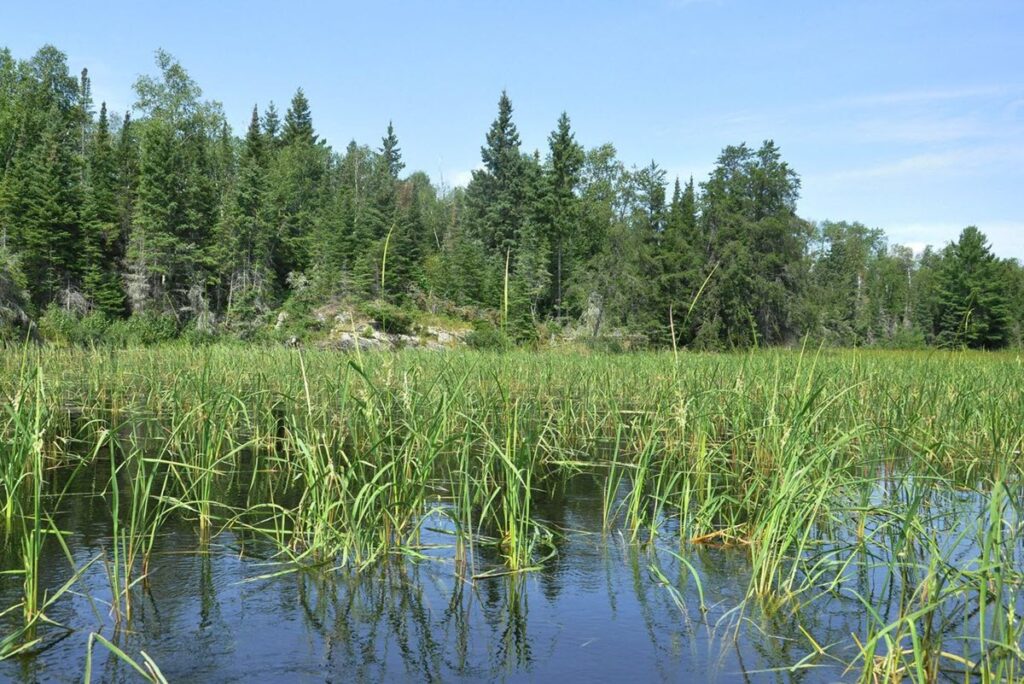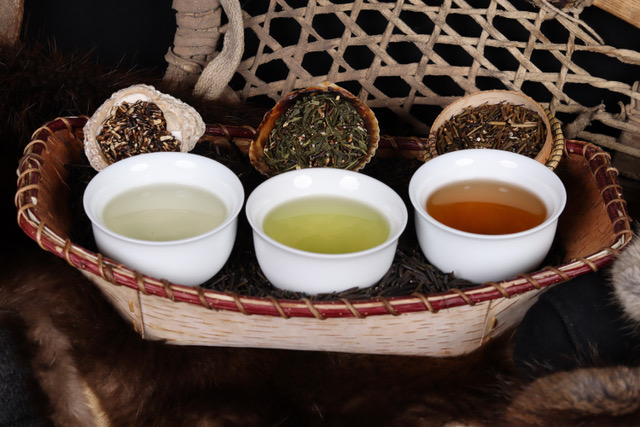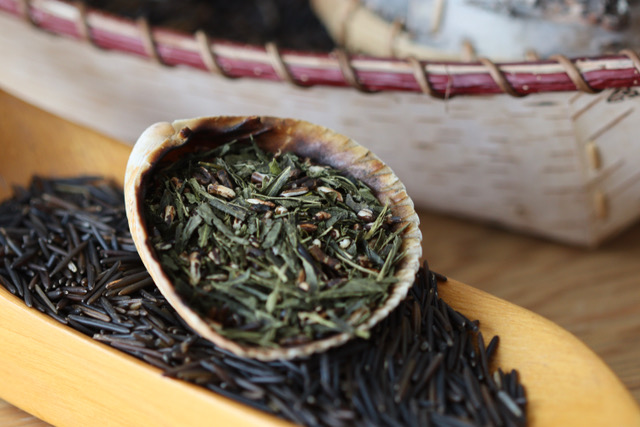Canada’s version of genmaicha with an Indigenous twist
In Japan, it’s called genmaicha; in Korea, hyeonmi-cha. Tea Horse, a company based in Thunder Bay, Ont., brings you Canada’s version of tea blended with rice: manoomincha.
Caption: Marc Bohémier (l) and Denise Atkinson, co-founders of Tea Horse, pose in a manoomin patch in The Pas, Manitoba. All photos courtesy of Tea Horse.
Listen to the interview

East and West Tea Cultures Meld in Manoomin Cha
Tea Horse co-founders Denise Atkinson and Marc Bohémier blend their teas with Canadian wild rice, called manoomin in Atkinson’s Indigenous language.
They developed a proprietary process to roast the wild rice, blending it with teas imported from Japan and elsewhere in Asia. The duo has launched four manoomin blends, one of which is sold through Canadian tea giant DAVIDsTEA.
A new chai blend is in development.
The husband-and-wife team, based in Thunder Bay, Ontario, joined us on Tea Biz to chat about their Indigenous Canadian version of rice tea.
A conversation with Tea Horse co-founders Denise Atkinson and Marc Bohémier
By Jessica Natale Woollard
Inspired by Japanese genmaicha and other rice teas, Tea Horse blends tea with Canadian wild rice known as manoomin in the Ojibwe language.
Jessica: You have created a uniquely Canadian blend of tea. Why did you choose wild rice as an inclusion in your tea blends?
Denise Atkinson: I’m of Obijwe heritage, Anishinaabe,* from Red Rock Indian Band. Wild rice is called “manoomin” in my language. It’s been a big part of the Anishinaabeg culture forever, for time immemorial.
I’m somebody who always drank genmaicha for breakfast. I received a sample from a company, and it looked like it was blended with wild rice. I looked at Marc and said: we should try infusing manoomin as a tea, like a Canadian Indigenous version of genmaicha. We did some research and development, blended it with green tea, and voilà, we got this manoomincha.
We thought, let’s show people the versatility of this beautiful Indigenous grain.
The Ojibwe are an Indigenous people in Canada and the United States, who are part of the Anishinaabe cultural group. Their traditional territories extend from the Great Lakes.
Tea Horse is certified with the Canadian Council for Aboriginal Business.
Jessica: How did you come to develop your proprietary roasting process?
Marc Bohémier: I consulted with people in the coffee industry, the grain malting industry, and even the kettle corn industry. I developed a process to roast the wild rice that’s an amalgam of the different inputs I got. We can’t say more than that; the process is our secret.

Jessica: Do the Anishinaabeg have a history of any tea-like beverages?
Denise: I grew up in a traditional land-based home with my maternal grandparents. My grandmother was a trapper and a hunter and could not speak English; she only spoke her language, Ojibwe.
She always has a pot of tea on. When we would go blueberry picking, she would pick wintergreen, which is in the mossy area of the blueberry patch. She would make Labrador tea and cedar tea for my grandpa when he had bronchial issues. We used a lot of roots and leaves, twigs, tamarack twigs. It is quite large in the Ojibwe culture to infuse berries, leaves, twigs, and roots.
Marc: A lot of people don’t realize when the Europeans first came to places like northern Canada and the northern US, the Anishinaabeg would give them cedar tea to counteract the effects of scurvy because it’s high in vitamin C.
Related
Tea Horse Gets Boost
Jessica: Describe the taste of your manoomincha.
Denise: Manoomincha, our original blend, is very grassy and marine because we use Japanese green tea, and then we blend it with our roasted, kind of earthy-flavored roasted manoomin.
We have manoomincha dark, which is blended with hojicha, a combination of roasted green tea and roasted manoomin. It has a very rich, robust flavor.
We also have something called manoominabo, which in English means “wild rice juice.” It’s a tisane, so it is just the roasted manoomin that you infuse to make a beautiful caffeine-free tisane. It’s very comforting with a brothy flavor.
Marc: With our roasted manoomin, we want to honor many of the Asian peoples, like the Korean, Japanese, and Chinese people, who roast barley and create boricha or mugicha. They were our inspiration for creating the manoominabo as well. Our teas fuse the east with the west, western Indigenous peoples with Indigenous peoples from the east. As many of us know in the tea world, the caretakers of ancient tea trees, like the ones that produce Pu’er from Yunan, are Indigenous groups in Asia that have been caring for these forests for millennia. We’re trying to honor all of these different Indigenous people by fusing these amazing gifts that we have all been given into different types of teas.
*The Anishinaabeg are culturally related indigenous peoples of the Great Lakes region of Canada and the United States. They include the Ojibwe, Odawa, Potawatomi, Mississaugas, Nipissing, and Algonquin peoples.
Learn more about Tea Horse’s manoomin blends.
This interview has been edited and condensed.
Share this post with your colleagues.
Sign up and receive Tea Biz weekly in your inbox.

Never miss an episode
Subscribe wherever you enjoy podcasts:


